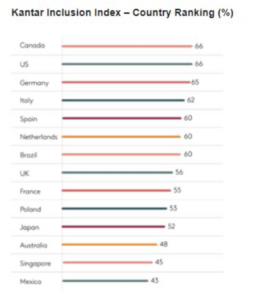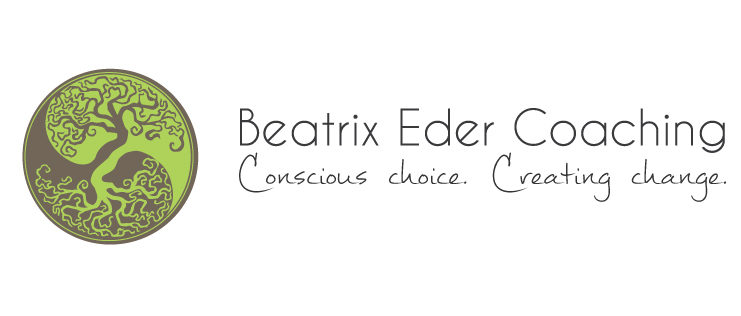
Equity throughout the employee life cycle – part 4
12 tips for inclusive and equitable succession planning
This article is the final part within my series of “Equity throughout the employee life cycle”. The last article explored equitable approaches to retain diverse talent and how Inclusive Leadership contributes to make both performance management practices and career development more equitable.
Covid intensifies leadership roles
The consecutive waves of COVID and the general uncertainty of the pandemic intensify the roles of leadership:
Complex situations that cannot be reduced to binary answers; dilemmas with seemingly opposing needs; anxiety and burnout affecting many.
Not only does this amplify the necessity for a strong leadership, it also forces organizations to focus more on their continuity- and succession-planning.
Also, COVID and the subsequent events around social injustice have brought Diversity, Equity and Inclusion more center-stage, propelling organizations to build more inclusive and equitable workplaces that work for all instead of a select few.
Covid continues to prioritize DEI
Before the pandemic, Diversity, Equity and Inclusion (DEI) were often considered a “nice to have”, but the struggle of those in less empowered groups has brought DEI even more center-stage, giving organizations the opportunity to build a more inclusive and equitable workplaces that will strengthen their organizations far beyond the years of the pandemic.
Singapore
Across the world, DEI is a multi-faceted and evolving business area and different geographic regions face their specific challenges: in the US the main focus is on racial equity; in Europe on generational inclusion; in Asia on gender equity with awareness also growing for the inclusion of LGBTQ people.
According to a poll conducted by Kantar in 2019 on workplace diversity and inclusion (D&I) practices, the two Asian countries analyzed - Singaporeand Japan – were both in the lower tier of the ranking. The poll interviewed 18,000 in 14 countries worldwide, including 1,050 individuals in Singapore.

Mandy Rico, global director of the Kantar Inclusion Index, said: “A significant amount of work remains to be done to make workplaces more inclusive, diverse and equal, especially around the subject of bullying which persists at high levels around the world.”
Meanwhile, there are also inspiring examples such as Singapore Airlines and Singtel making it within the first 50 of the global top 100 in a separate D&I index by Refinitiv.
Challenges with succession planning
Succession planning used to have a fairly narrow focus on simply filling a vacant role with someone.
While most companies today recognize the importance of a carefully planned succession planning, many of them still have a rather passive attitude of simply "waiting" that an employee gets ready for the next role instead of actively being involved in making someone ready.
An explanation for this attitude might be that businesses tend to operate in the short-term, focusing on performance that guarantees quick wins and planning mainly for the next quarterly results. Phases of disruption and ambiguity – like the new normal with Covid – make it also difficult to know what is going to come and plan ahead.
Another reason involves the perceived threat experienced by the job holder who – consciously or unconsciously – wants to appear irreplaceable. Organizations can also shy away from proper succession planning by fear of giving the impression of not having confidence in their current leaders.
While these are common human behaviors, they can undermine a company’s success. For this reason, it is absolutely key that organization s address succession planning with the understanding that it is their insurance policy for sustainability and staying relevant in the future.
Though most leaders in organisations confirm that succession planning is of utmost importance – they also acknowledge that they do not have a solid succession plan in place. What seems to be often missing is a holistic and practical approach that combines both data-driven and people-centric elements.
With these challenges, the biggest focus in the area of talent is often put on recruitment. External hiring is important and can make sense in specific situations, however it also makes it necessary to have an inclusive onboarding process to set up new employees for success. At the same time, smart succession planning reduces the tendency of employees to job hop in order to advance their career.
A study by McKinsey found that while hiring and retention are important measures for Diversity & Inclusion, an important factor for employees with underrepresented background is career velocity: how long does it take for them to get promoted and how does this compare to more empowered groups?
Benefits of succession planning
Without a defined process for succession planning and clarity on who is responsible (is it the role of HR? or the business leader?), organizations run the risk of having a leadership vacuums which can destabilize businesses for several months. Thus, organizations need to imagine future scenarios and strengthen their internal leadership development.
Cultivating corporate talent and rewarding employees with advancements within the company means better opportunities for emerging leaders, which increases retention and promotes the overall stability of the o organization. But there are also other benefits which go beyond the obvious result of having a steady pipeline of talent:
- When policies and processes are equitable, companies have a more-diverse portfolio of leaders
- A leadership team that is both diverse and cohesive, is better equipped to creatively problem-solve and thrive in complexity and change.
- Organizational culture is being strengthened when leaders are being groomed into embodying the organizations values
- Organizational stability and resilience are strengthened, which generates market confidence and drives the value for various stakeholders, not just the shareholders
But how do we go from diversity and inclusion -which are outcomes - to equity, which is a modus operandi of an organization?
Equity in succession planning
When the processes and practices of succession planning are equitable, they ensure that people with underrepresented identities have access to opportunities and development.
Applying an equity lens in succession planning requires teams to
- Become aware of organizational policies and processes on the one hand and personal assumptions and practices on the other hand
- Confront themselves about these policies, processes and practices and how they might benefit some and hinder others
- Step into their courage and make meaningful, and often uncomfortable, changes to the status quo.
Applying an equity lens in performance reviews and career development means that we focus our attention on the impact of our decisions:
Are we making choices that enable equal opportunity for all people? Or could it be that our choices reinforce structural barriers and deeply ingrained inequalities in power?
Succession planning is the cornerstone of talent development and intrinsically linked to both the business strategy and DEI. This article highlights some tools and practices to facilitate a succession planning process that is more diverse, inclusive and equitable.
12 tips for succession planning with a DEI lens
- Start by using insights from data about the hiring, promotion and velocity of underrepresented groups to detect core pain points and orient your decision-making.
- Avoid the pitfall of algorithmic bias and make sure that decisions are supervised by a person with adequate training in algorithms and not trusted solely on AI.
- Establish a succession management plan for both staff and board, with an explicit focus on equity for various diverse groups: women, racial minorities, LGBTQ, people with disabilities.
- Define targeted outcomes and measures. You know the old adage of “what gets measured gets done”. Use stretch-targets and require a certain percentage of gender / racial / LGBTQ etc representation for all of your senior positions, for the C-suite, and for the board.
- Recognize to what extent racism and bias might permeate both the process and the practices of the organization. Acknowledge how these assumptions might influence how talent is developed and promoted. Continually review and question these assumptions on how a leaders should look / behave.
- Identify emerging leaders of diverse background who stand out and tap them for development.
- Provide ample support when you promote an employee with diverse background into a leadership position. Pave their way to successwith a support team that covers different areas of learning and experience sharing: this may include their line manager, a mentor, a leadership coach, and a peer.
- Promote work-life balance and family-friendly habits at all levels of the organization, and in particular actively encouraging men to be equal caretakers at home.
- Provide phased off-ramping for older employees to retain mature skill sets and facilitate knowledge transfer.
- Have a few senior level advocates to champion others in building a culture around actively preparing talents and successors within the organization.
- Embed equitable succession planning practices at all levels of the organization, making every employee with direct reports accountable.
And finally: Make sure that succession planning is explicitly stated among the tasks of an Inclusive Leader and also incentivized with further opportunities for development. This will make the process be so more rewarding, for both the person holding a role, and their successor.
Leaders of organizations where inclusive leadership is embedded in every area of business and every interaction, have two questions guiding their behavior:
How would attitudes change, if managers were rewarded for developing and promoting talent internally?
How would the velocity of certain employee groups change if the rate at which managers develop and promote them would be part of the manager’s performance review, influencing their bonus?
Succession planning is not for today but for tomorrow!
Companies need to be proactive and systematic about ensuring their succession planning is truly inclusionary, diversified, and equitable.
Managers and HR teams need to work together to not only identify talent and successors for key-roles but also develop them. Keeping a future-oriented focus is both an imperative and a challenge: maintaining financial performance today that takes into account long-term impact on the triple bottom line of people, planet and profit while making choices that that prepare for new, yet unknown opportunities of the future.
As the Inclusive Leader you are, ask yourself: “How can I deliver great results while providing leadership that my direct reports may use for their own growth and that ensures that our organization stays relevant and trusted?”
Questions for reflection
- What is your company actively doing to prepare a diverse talent and succession pipeline?
- What is the velocity of underrepresented employees in advancing their career? Do women advance at the same speed as men? How about minorities?
- Are bonusses linked to inclusive practices?
- Does your company hold audits for bias?
********************************************
Was this article helpful?
Here are some ways I can support you and your organization:
Get Individual leadership coaching with Beatrix
Deepen and accelerate your learning with one-on-one coaching with Beatrix. Identify and transform patterns and learn new tools that will help you to practice Inclusive Leadership at Work & Home and effectively work with people across differences in identity, experience and power.
Inquire about Individual Coaching here.
Get group coaching with Beatrix
Team coaching is a mid-term process with regular sessions that support a team in an individualized way to improve both the improvement of task-execution as well as the collaborative alliance within the team. The process supports teams to become more cohesive, increase their ability to problem-solve and become more competent in transforming overt and covert conflicts.
Inquire about Group Coaching here.
Book Beatrix for a webinar / workshop / training
Beatrix facilitates virtual and in-person workshops using experiential, interpersonal and reflective activities to share knowledge around Inclusive Leadership, inspire vision, ignite change and build workplaces that are diverse and cohesive. Participants will be supported to embrace new perspectives about differences and translate freshly gained knowledge into concrete actions.
Sessions are customized to your needs and can be delivered in 90-minutes to 3 hours.
Inquire about Webinars and Workshops here.
Get support with Organizational Consulting
Beatrix can help your company to co-create creative and cohesive teams that work effectively in a hybrid work environment, using effective feedback systems, collaborative decision-making processes and respectful communication norms.
Inquire about Organizational Consulting here.



